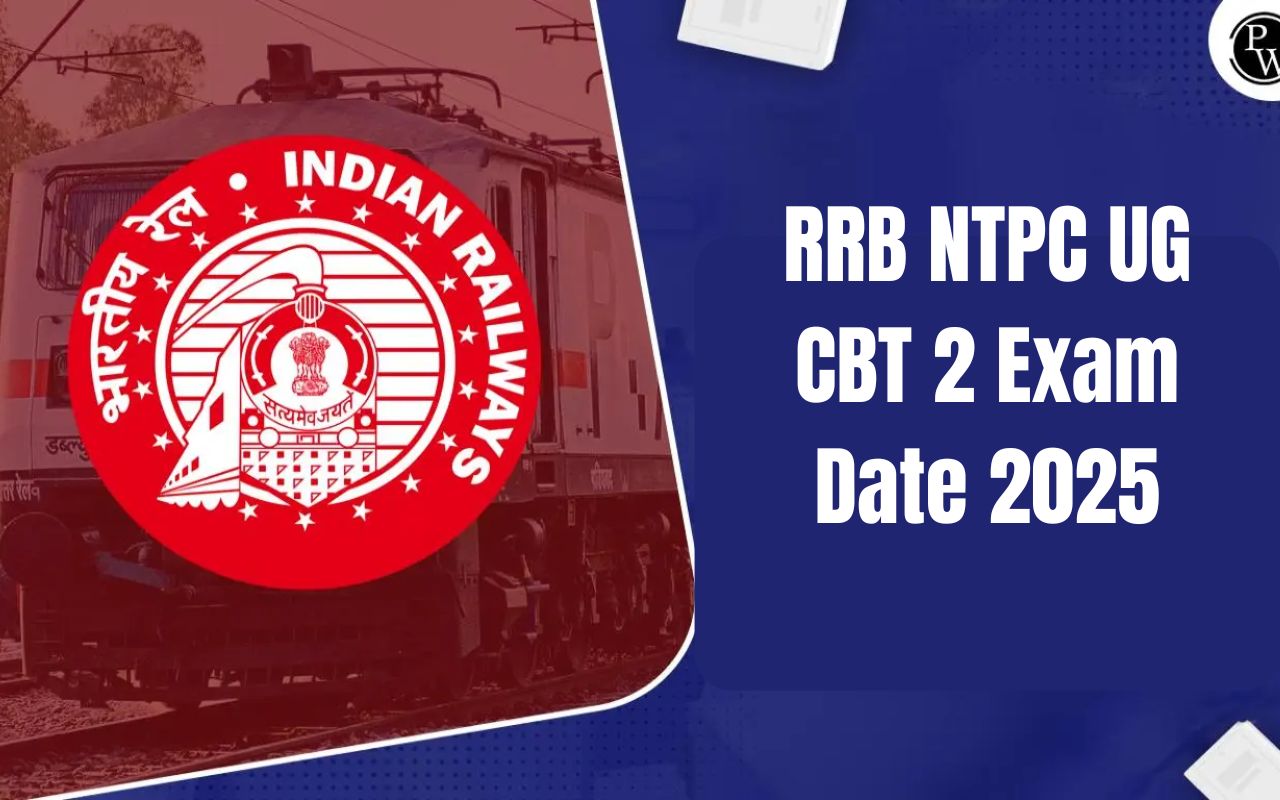
Railway Indus Valley Civilization Questions: The Indus Valley Civilization, one of the world's oldest urban cultures, flourished in the northwestern regions of South Asia around 3300 to 1300 BCE. The Indus Valley Civilization, also known as the Harappan Civilization, was remarkable for its advanced urban planning, architecture, and social organization. Key sites include Harappa, Mohenjo-Daro, and Dholavira. The civilization is noted for its well-planned cities, brick houses, elaborate drainage systems, and water supply systems.
Indus Valley Civilization Questions are important for competitive exams mainly Railway Exams in which history plays a major role. Check Railway Indus Valley Civilization Questions below along with answers and explanation.Railway Indus Valley Civilization Questions
Some important Railway Indus Valley Civilization questions along with answers and explanations are provided below for candidates' reference.Which river was the most significant geographical feature of the Indus Valley Civilization?
Options:
Answer:
The correct answer is Indus.
Detailed Solution:
The most significant geographical feature of the Indus Valley Civilization was the Indus River, which provided water for agriculture and facilitated trade and transportation. The civilization was named after this river, and its settlements and agriculture were highly dependent on the Indus River and its tributaries for water, irrigation, and transportation. The Ganges, Nile, and Tigris are important rivers in their respective regions but are not directly associated with the Indus Valley Civilization.Which city of the Indus Valley Civilization is known for its impressive grid system of streets?
Options:
Answer:
The correct answer is Mohenjodaro.
Detailed Solution:
Mohenjo-daro, one of the major cities of the Indus Valley Civilization, is renowned for its well-planned grid system of streets, indicating an advanced urban planning system. Mohenjo-daro is one of the most well-known cities of the ancient civilization, and it is famous for its well-planned urban layout with streets laid out in a grid pattern. This grid system reflects the advanced urban planning and engineering of the Indus Valley Civilization.Which animal was commonly depicted in the art of the Indus Valley Civilization?
Options:
Answer:
The correct answer is Bull.
Detailed Solution:
The depiction of Bull is quite common in the art of the Indus Valley Civilization, suggesting their religious and cultural significance. Bull were a significant part of their culture and economy, and they are frequently depicted in various forms of art from the Indus Valley Civilization. While other animals like elephants, lions, and horses also appear in their art, the Bull holds a prominent place in their depictions.What was the major trade item of the Indus Valley Civilization?
Options:
Answer:
Hence the correct answer is Raw materials Such as Lead, Copper etc.
Detailed Solution:
Trade Goods: The Harappans imported various raw materials, including minerals from Iran and Afghanistan, lead, copper, and other metals from different parts of India, jade from China, and cedarwood from the Himalayas and Kashmir. They also traded in items such as terracotta pots, gold, silver, beads, flints for tools, seashells, pearls, and precious gemstones like lapis lazuli and turquoise. Maritime Trade Network: The Harappans had an extensive maritime trade network, especially with Mesopotamia. Harappan seals and jewelry have been discovered in archaeological sites in Mesopotamia, covering modern-day Iraq, Kuwait, and parts of Syria. Sea Routes: Long-distance sea trade occurred across the Arabian Sea, Red Sea, and Persian Gulf. Plank watercraft equipped with a single central mast and sail made of woven rushes or cloth likely facilitated these sea routes, enabling the Harappans to engage in far-reaching maritime trade activities.Which structure found in the Indus Valley Civilization is believed to have served as a public gathering place?
Options:
Answer:
The correct answer is The Great Bath.
Detailed Solution:
The structures known as "Great Baths" found in the Indus Valley Civilization are believed to have served as public gathering places for ritualistic bathing and social activities. The Great Bath, located in the ancient city of Mohenjo-Daro, is a well-known example of such a structure and is believed to have been used for communal bathing and possibly for social and religious gatherings. While granaries and citadels were also important features of the civilization, the bath is particularly associated with communal activities.Which ancient civilization had a sewage and drainage system?
Options:
Answer:
Correct answer is "Indus Valley civilization".
Detailed Solution:
The Indus Valley civilization had an advanced sewage and drainage system, with well-built underground channels that provided efficient sanitation and waste The ancient Indus Valley Civilization, situated in present-day eastern Pakistan and northern India, was known for its advanced infrastructure and pioneering achievements in hydraulic engineering. They developed innovative water supply and sanitation systems, which are among the earliest known examples of such technologies.Which animal was not represented in the seals of the Indus Valley Civilization?
Options:
Answer:
The correct answer is Lion
Detailed Solution:
Lion were not represented in the seals of the Indus Valley Civilization. However, animals like elephants, bulls, and rhinoceroses were commonly depicted. While elephants, bulls, and rhinoceroses are occasionally depicted on the seals, the tiger is less commonly represented in their art and iconography. The lion is an animal that is not found on the indus valley civilizations seal.What is the significance of the "Great Bath" in the Indus Valley Civilization?
Options:
Answer:
The correct answer is Religious rituals.
Detailed Solution:
The "Great Bath" in the Indus Valley Civilization is believed to have been used for religious rituals, possibly related to purification or ceremonial bathing. It is considered a significant structure in Mohenjo-Daro and is believed to have been used for ritualistic bathing and purification. While it may have served secondary purposes like public gatherings or even water storage to some extent, its primary significance is associated with religious or ceremonial activities.Which ancient civilization is often considered contemporaneous with the Indus Valley Civilization?
Options:
Answer:
The correct answer is Mesopotamian civilization.
Detailed Solution:
The Mesopotamian civilization, particularly the Sumerians, is considered contemporaneous with the Indus Valley Civilization, as both civilizations existed around the same time period and had interactions through trade and cultural exchange. Global Significance: The Indus Valley Civilization holds immense historical importance as one of the three major ancient civilizations, alongside Ancient Egypt and Mesopotamia. These civilizations represent some of the earliest complex societies in human history. Widespread Area: Among these three civilizations, the Indus Valley Civilization is the most extensive, covering an area of nearly 800,000 square kilometers. This vast expanse underscores the advanced urban and cultural development of this ancient civilization.Which material was commonly used for the construction of houses in the Indus Valley Civilization?
Options:
Answer:
The correct answer is Mud Bricks
Detailed Solution:
Residential buildings in the Harappan civilization were primarily constructed using stone. These houses featured regular baked bricks with specific measurements (length:width:thickness at 4:2:1) and sun-dried bricks. These bricks were discovered near the village of Harappa in present-day Pakistan, along the River Ravi. The houses were built using uniformly-sized burnt bricks, a characteristic found in many cities of the Harappan culture, making their construction methods notable. For more such content follow the Physics Wallah website. We provide quality content, including sample papers, mock tests, guidance sessions, and more. Also, enroll today on Railway Online Courses.Railway Indus Valley Civilization Questions FAQs
1. Why is the Indus Valley Civilization questions significant in railway exams?
2. What types of questions are commonly asked about the Indus Valley Civilization?
3. How can knowledge of the Indus Valley Civilization help in railway exams?










